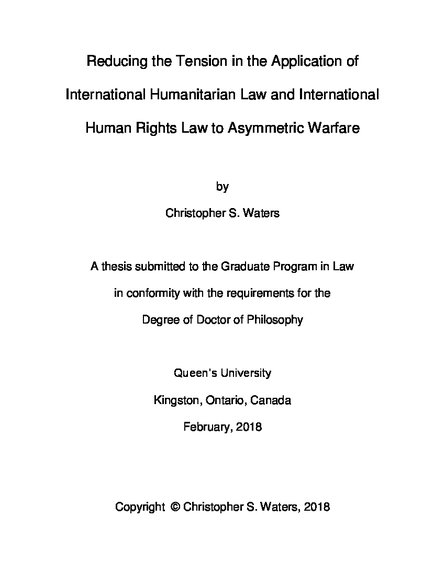
There are two similar but competing legal regimes in the international domain that protect people: human rights law and humanitarian law. Currently, the two regimes are in tension. In the last four decades, international human rights norms have expanded to occupy the field previously dominated by humanitarian law and have become the primary legal regime for governing the use of force in non-international armed conflict. The reasons are the changing nature of warfare and its participants and slow modernization of humanitarian law conventions. The tension has created divergent standards of interpretation of the two regimes, which has led to the inconsistent application of human rights and humanitarian law norms. Proponents of international human rights law maintain that it is the only regime capable of adequately protecting the victims of violence in non-international armed conflict. They state that the humanitarian law conventions developed to mitigate the deleterious effects of conventional international armed conflict are ineffective in controlling the consequences of contemporary asymmetric warfare. Human rights conventions have much more rigorous protections for those victims, and access to accountability mechanisms. However, the continuing expansion of human rights norms into the realm of armed conflict is ineffective. While humanitarian law norms applicable to non-international armed conflict lack density in topics such the use of lethal force and the treatment of detainees, rejuvenation of humanitarian law would be a more effective solution. Humanitarian norms were specifically developed to moderate the application of lethal means, to protect the victims of armed conflict, and to govern the treatment of detainees. The key to reducing the tension lies in leveraging the fundamental principle of humanity, though the creation of a universal framework for the use of force based on the unifying principle of humanity that would apply to every person, at all times, irrespective of characterization of the conflict. Such a framework must reflect the highest norms of precautions and protection found in both regimes, and must be simple understand and apply.